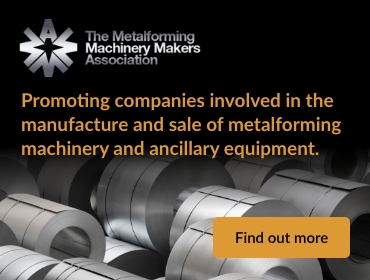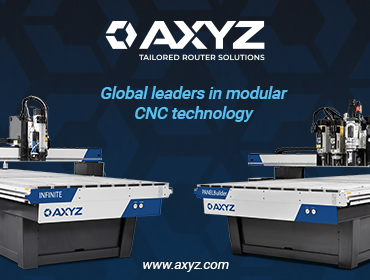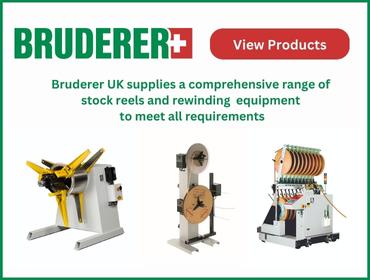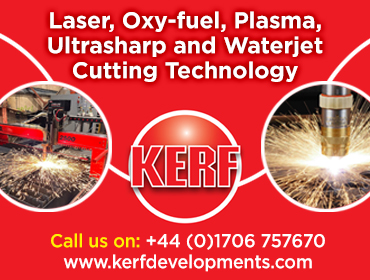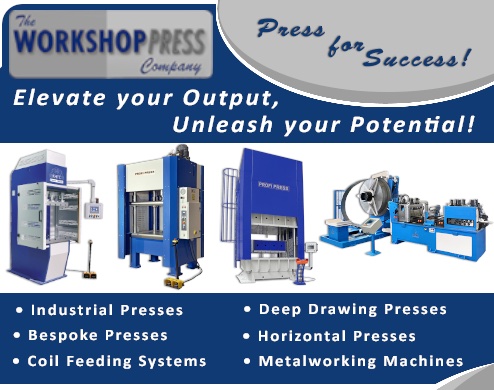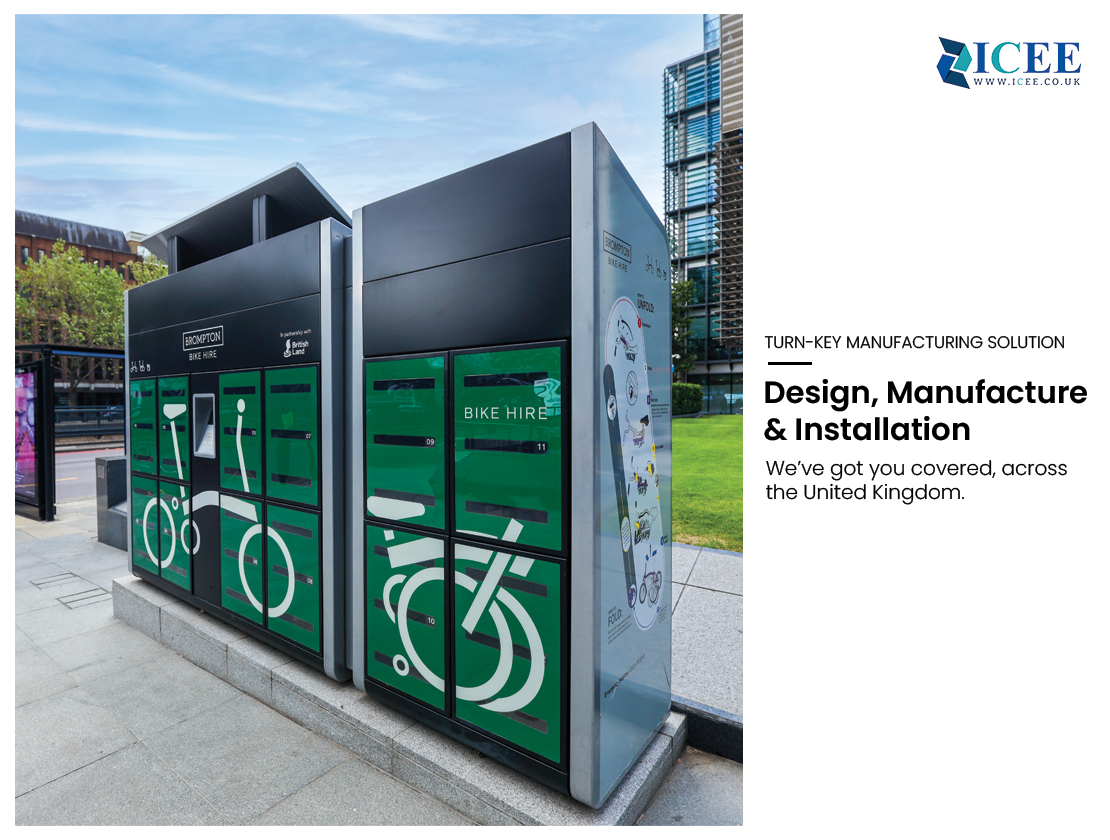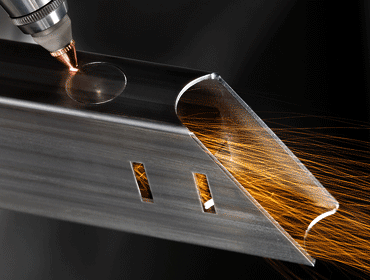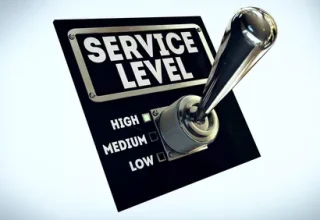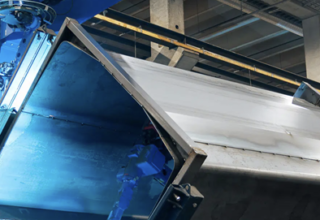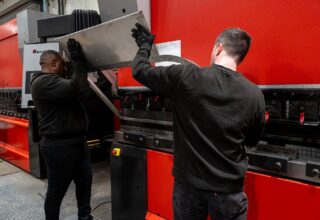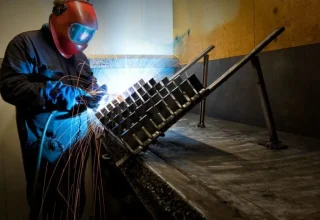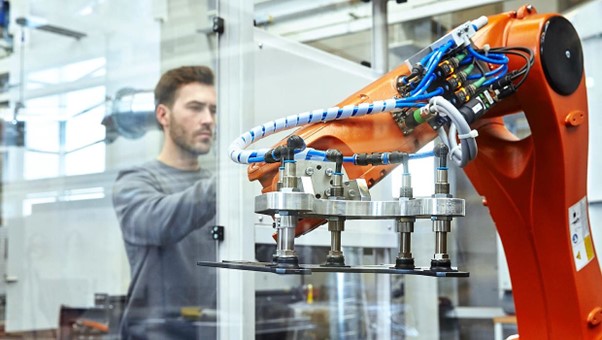
Digital process chains offer great efficiency advantages for sheet metal processing. However, this increases the demands on the workpieces. In this article, we will show you why certain process steps are indispensable.
If the goal is to increase production, does it do any good to make the machines run faster? Hardly: In traditional process chains, secondary activities take up to 80 percent of the time. The goal of digitization and Industry 4.0 is to reduce these secondary activities and better coordinate processes. To achieve this, all processes must be automated as much as possible.
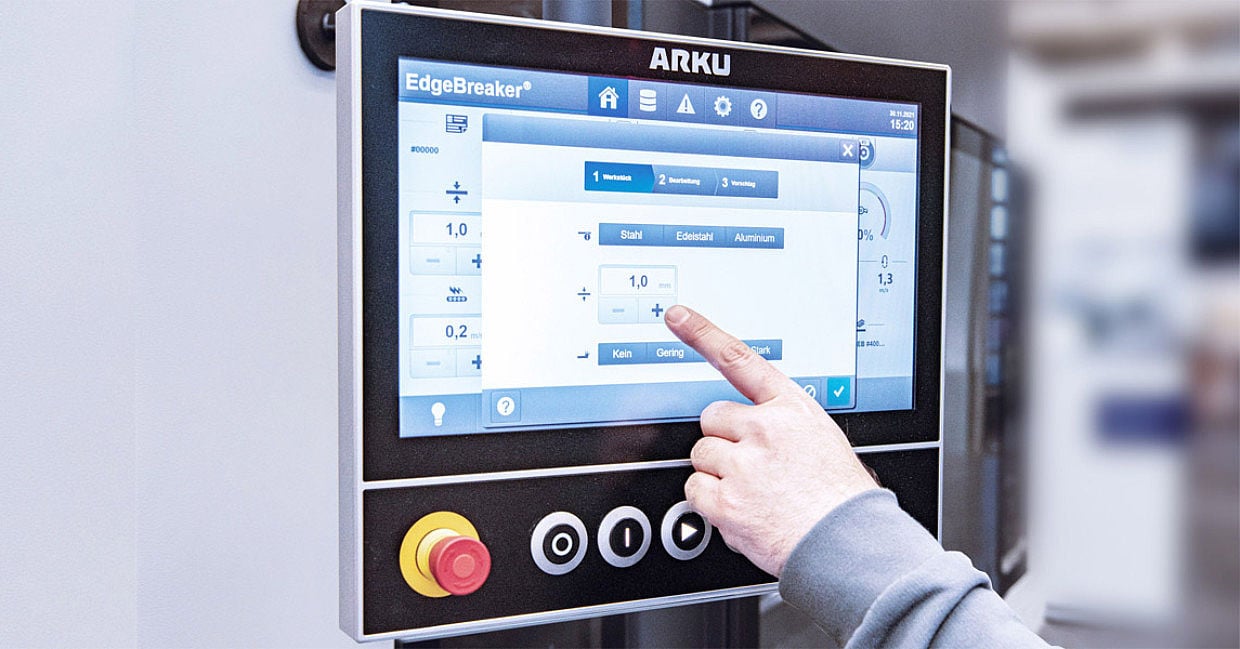
Automated process chains demand tight tolerances for sheet metal
For example, a welding robot can weld with considerably greater repeatability than a human. As a skilled worker, the human, also needs some skill and concentration to ensure that the welds achieve a high quality. The robot does not have these problems – it does not get tired and does not need breaks from work. However, the welding robot requires particularly tight workpiece tolerances. This is because it is less flexible than a human and can only handle the tasks for which it is programmed. Therefore, workpieces are quickly sorted out as not OK. This may be necessary for the digital process chain to function, but it severely slows down efficiency and productivity.
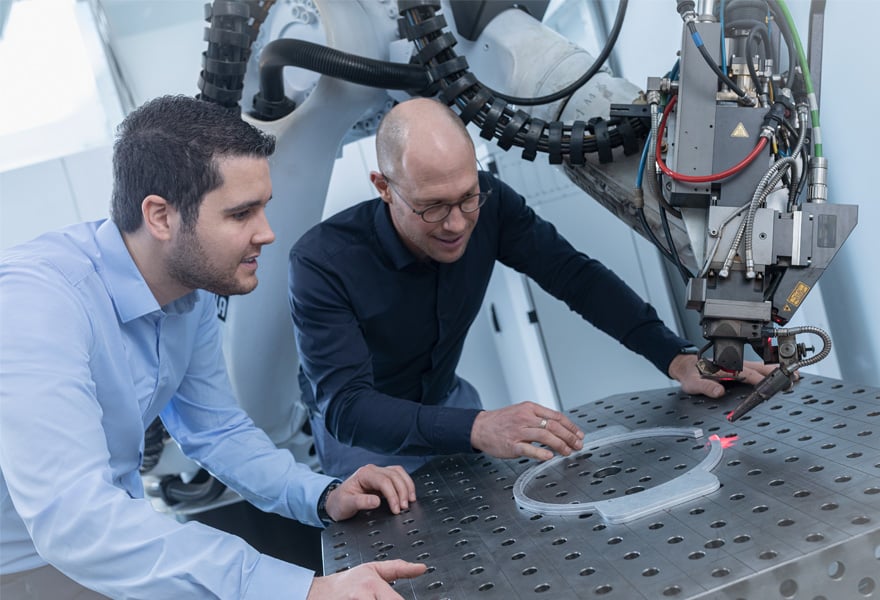
Aligned sheets and sheet metal parts enable compliance with tolerances
In order to maintain tight tolerances on sheet metal parts, it is necessary to level them. This is because sheet metal can exhibit residual stresses. These arise either from temperature differences or mechanical effects. Processes such as rolling, shearing, punching or flame, plasma and laser cutting can cause such residual stresses. This can cause the sheet metal components to warp in the further machining process. If you want to be sure that the sheets and sheet metal parts contain as little residual stress as possible, you have to straighten them. Another important component of digital process chains for sheet metal processing are bending cells. Robots pick up the sheet metal parts, place them in a press brake, bend them and place the parts back down. But watch out: Even in bending cells, angularity errors can occur during bending. The cause is again the residual stresses; the remedy is straightening.
/Verfahren/2022-web-verfahren_Teile_Biegen.jpg?width=610&height=379&name=2022-web-verfahren_Teile_Biegen.jpg)
Sheet metal deburring also indispensable in automated process chains
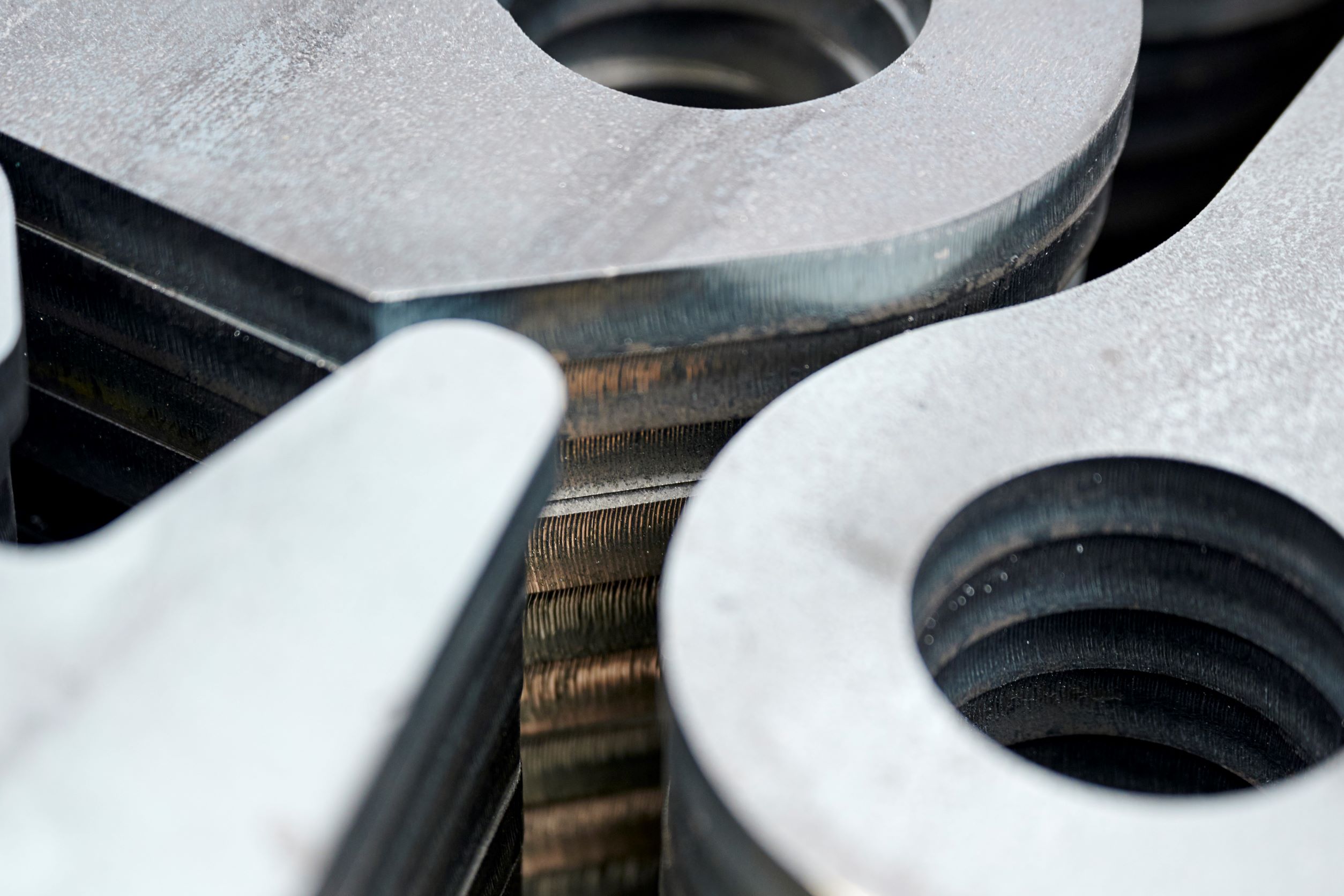
The levelers in a digital sheet metal process chain also have their requirements. For example, the parts should be burr-free because burrs can damage the straightening rolls. Therefore, a deburring process must always be provided before the leveling process. The burrs – small, protruding metal residues – occur during cutting. They are unavoidable during flame and plasma cutting, but they can also occur during punching or laser cutting. They can cause damage both when they still adhere to the workpiece and when they break off at an indeterminable point in time. In digital process chains for sheet metal processing, the risk of people being injured by the burrs is rather low. After all, the machining processes should be automated as far as possible. But damage to tools is still possible. Not only the straightening rolls, but also other forming tools can be affected. They wear much more quickly if they repeatedly come into contact with the hard burrs. In addition, the burrs can cause scratches on the component surfaces when the workpieces are stacked. If the burrs break off in an uncontrolled manner at any point in the process chain, they can damage the equipment. Such uncontrolled processes must be avoided wherever possible.



